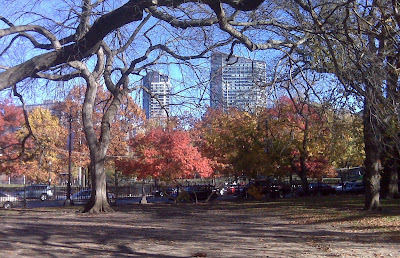 Here in my home town is one of the most beautiful cemeteries in the United States. The Mount Auburn Cemetery in Cambridge, Massachusetts blends beautiful landscape vistas that take full advantage of a post-glacial terrain of hills (drumlins) and ponds (kettle holes).
Here in my home town is one of the most beautiful cemeteries in the United States. The Mount Auburn Cemetery in Cambridge, Massachusetts blends beautiful landscape vistas that take full advantage of a post-glacial terrain of hills (drumlins) and ponds (kettle holes).The official website summarizes its history: "Founded in 1831, it was the first large-scale designed landscape open to the public in the United States. Today its beauty, historical associations and horticultural collections are internationally renowned."
"Our founders believed that burying and commemorating the dead was best done in a tranquil and beautiful natural setting at a short distance from the city center. They also believed that the Cemetery should be a place for the living, "embellishing" the natural landscape with ornamental plantings, monuments, fences, fountains and chapels. This inspired concept was copied widely throughout the United States, giving birth to the rural cemetery movement and the tradition of garden cemeteries. Their popularity led, in turn, to the establishment of America's public parks."
I took a late fall day off from work and spend part of the mornning strolling around and capturing some of the scenery. Below are some of them, featuring the last fall colors. (See other photos in my post from last year: El Día de los Muertos.)
























































